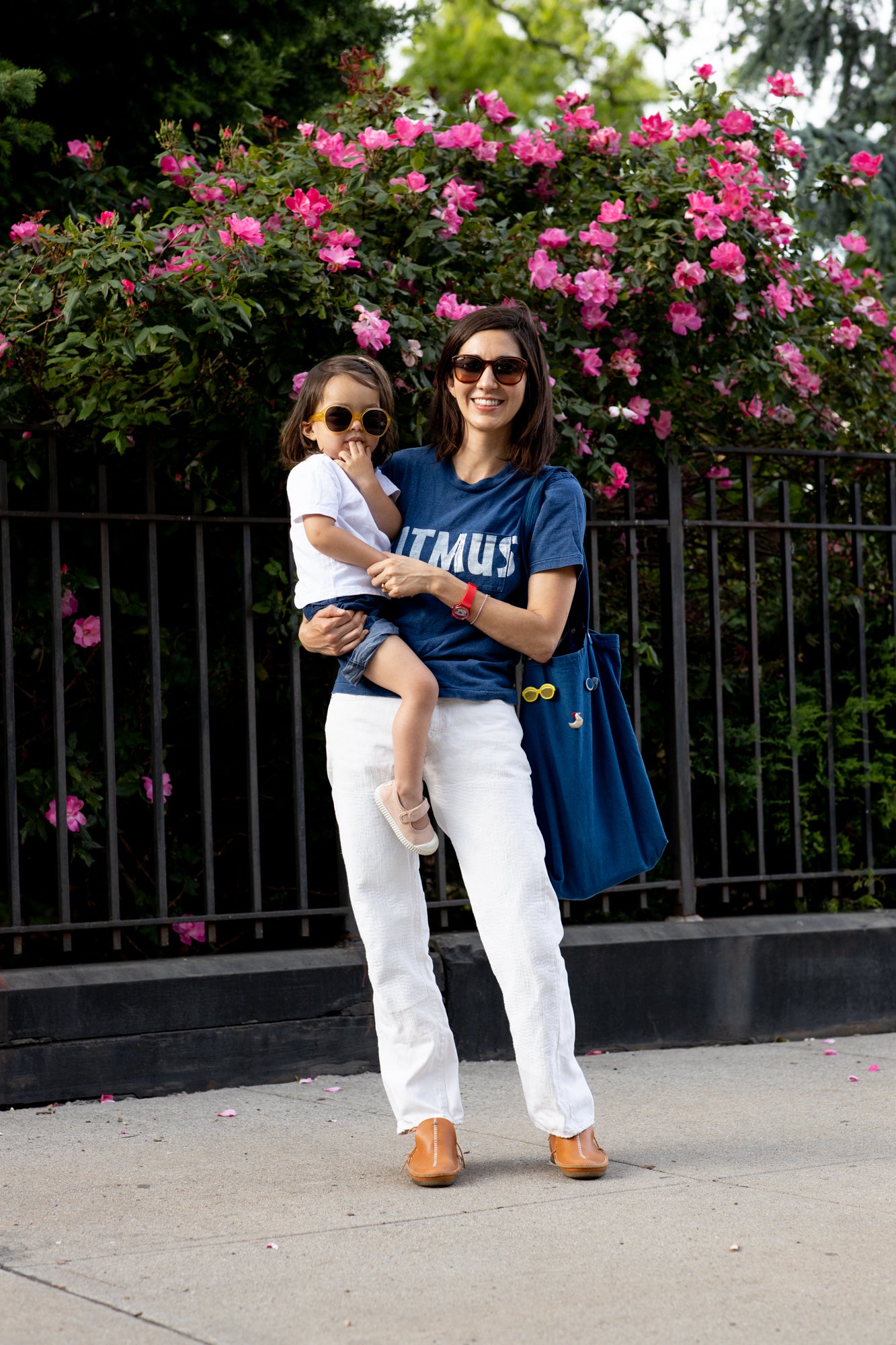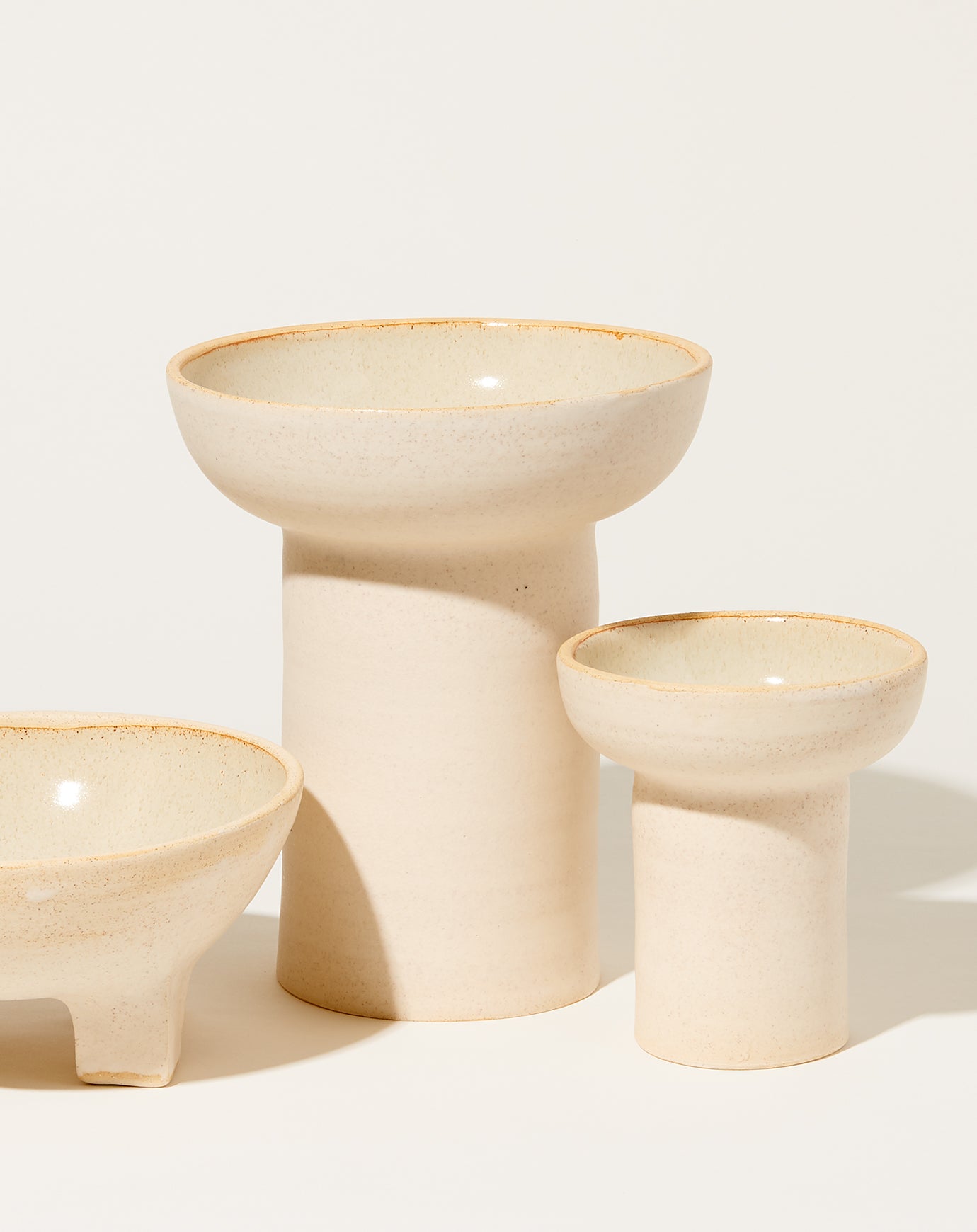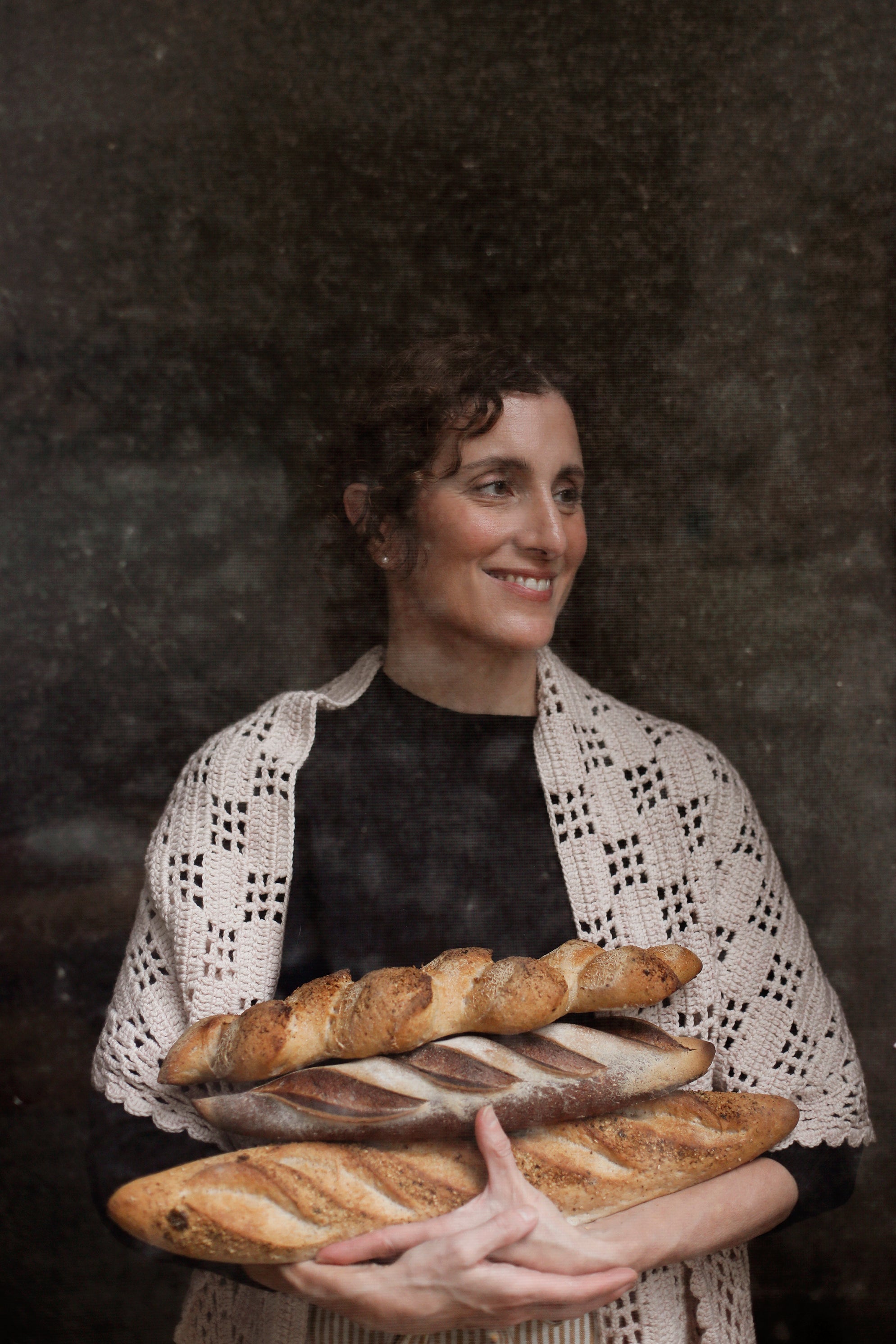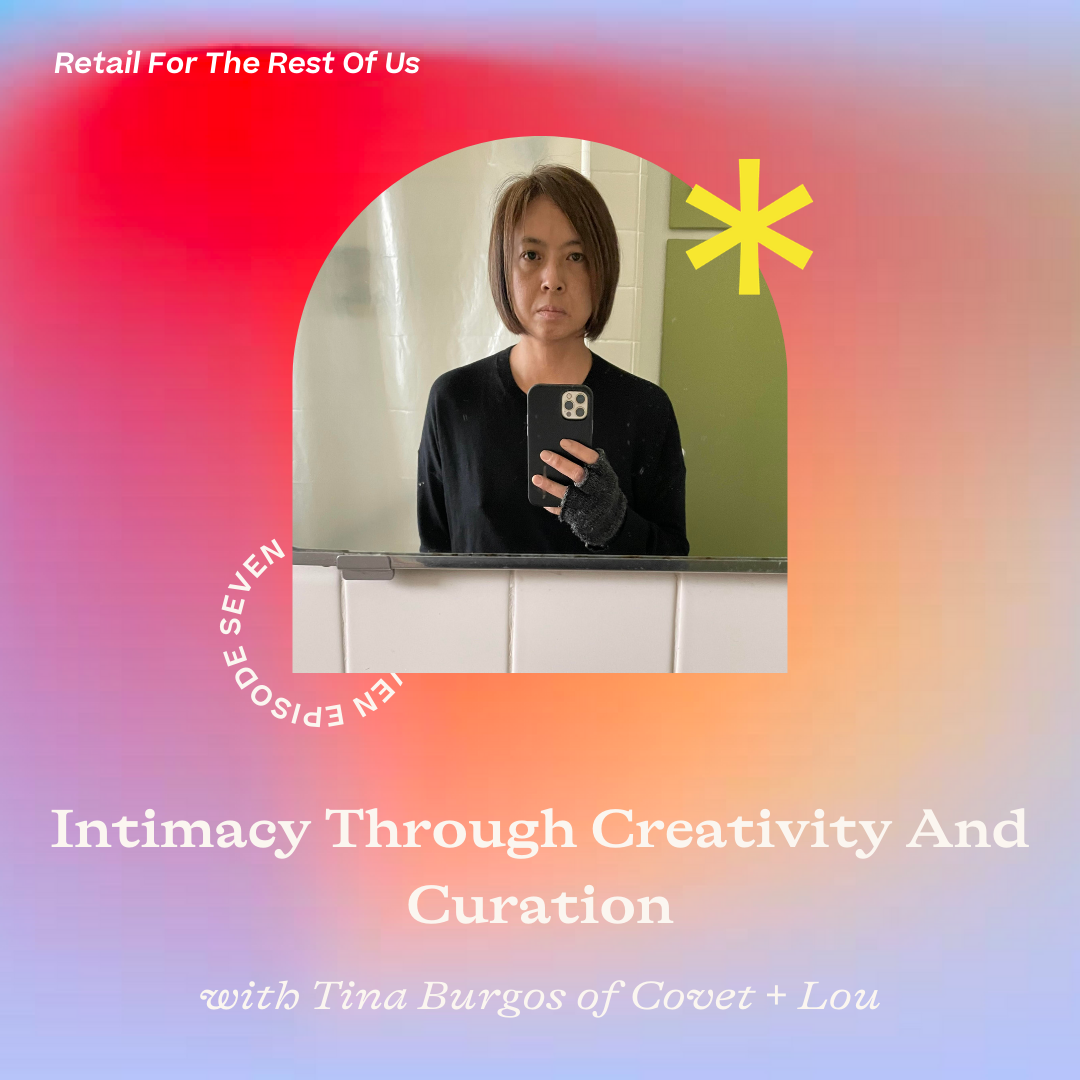The 8 Ball: Eva Masaki Soroken

Eva Masaki Soroken created her line of sunglasses knowing that she wanted timeless, classic shapes with a somewhat playful, edgy spin. She needed to make sure that the shape fit all faces and that quality was generously extended to the entire experience of owning a frame. While most production runs in the eyewear industry are by the 100s, Eva’s styles and colors are made in small batches of 20. Each frame feels precious and wearable. With each frame, Eva includes a buttery soft vegetable tanned leather case specially crafted by designer Miki Nagamine of Raku. Yet another defining example of the Eva Masaki ethos of being inspired by connections with friends and artists across the globe. We see a bright future with Eva Masaki.

How did you make the leap to producing your own eponymous line of eyewear?
It is a long nomadic story. I fell into the eyewear industry when living in Japan after college. I was based in Western Japan and just starting my company – called Mouse Power— consulting within the action sports industry. I was introduced to an amazing eyewear and lens manufacturer in Osaka, and they hired me as the first foreigner to enter their company which was established in 1911. It was challenging working with them, but I learned so much and it was a way for me to live close to my grandmother. After 3 years, Mouse Power grew to service the U.S., Europe, and Japan and I was able to come home to the U.S. and continue working from here. I got antsy (as always) and moved to Italy. While living there I drove to an eyewear show in Milan. I met an Italian factory and they wanted help with sales and marketing in Japan.
I moved back to Japan. This time I lived in Tokyo and worked in the refined, high-end fashion world – something I had never experienced. The Italians flew me to Paris and Milan annually for eyewear shows. Eventually, representing them turned out to be too difficult for the Japanese market, I ended up meeting other brands (US and European) that wanted help. I signed with Cutler and Gross of London, followed by GLCO, Illesteva, and Marni representing them in my Tokyo showroom. Tired of sales and marketing for other brands, I decided to make my own line through a connection in Italy and tell my own story.
Can you tell us about your time in Japan? What did your days look like there?
Over 14 years, I lived in so many places throughout Japan: from a village at the base of the Japanese alps, Nagoya in the middle of the country, Osaka where the food is delicious and the cultural heartbeat is so vibrant, to finally Shibuya, Tokyo. There my office was small, but I was surrounded by inspiring professionals in an old funky building. The tenants there were all running their own businesses: a realtor, a professional photographer, a modeling agency, an architect. We all did our own things, but we collaborated often and ate and drank together regularly. It was a merry life.
And what does your day look like now in New York?
Italy is up and moving in our early hours so often my mornings are filled with communication with the factory and talking back and forth with Japan before they call it a day. Once I get through that, I deal with any business here on the East Coast, moving on to Mountain Time and eventually the West Coast. Before I know it, Japan is awake again and I’m fielding calls and emails with a glass of wine in my hand. In between this and family life, I find myself dreaming up concepts, colorways, and designs when driving through the hills of the Hudson Valley, our new home base.
With Eva Masaki being inspired by connections with friends and artists across the globe, do you have a specific personal memory or connection that stands out to you?
I like this question…but I feel like there are too many memories and connections made over the years. It was my nomadic movement around the world and among so many industries that allowed me to meet amazing people and forge long-standing relationships.
One of my funniest moments was when the Italians gave me their credit card in Paris. I didn’t bring the proper attire for a fancy dinner. I found my way to the Champs-Elysees and casually strolled along like Julia Roberts in Pretty Woman, checking the stores and settled on a reasonably priced dress for the occasion. At dinner I’m not sure if it was my dress that dazzled them or simply the fact that I had only spent 500 Euro. They looked relieved and then of course dinner was an even more joyous occasion.
Can you tell us what small production means?
In the eyewear industry, small production doesn’t really exist in my mind. Most production runs are by the 100s, but my styles and colors are made in batches of 20. I’ll do a run and produce 20 strawberry, 20 water, 20 canyon, and 20 peach. I want my frames to feel precious and treasured.
What is your factory like in Northern Italy?
My factories are in the Prosecco region of Italy. It is a very romantic place to visit, with a glass of wine at lunch followed by many more over dinner after a hard day of work.
Was there a specific style of eyewear you knew you had to have when you first started Eva Masaki? Maybe a certain shape or a color?
I knew I wanted a timeless, classic shape with a somewhat playful, edgy spin. Something that could be played up or down depending on the acetate and lens combination. Also, I needed to make sure the shape fit both Caucasian and Asian faces. If it didn’t fit my Japanese mother AND my Jewish auntie, then there was no way I was going to make it in this industry. I leaned heavily on a violet anti-reflective inner coating from Zeiss for the lenses. Mouse Power had always been purple in my mind, so I tried to bring this color to my brand with an exaggerated sense of quality. I still love the purple coating, but I’ve learned this option is for a specific customer. These days I’m expanding lens options. Another focal point for me is the case that I offer with my frames. As much effort as I put into the frames, I extend this quality and creativity to the case, cloth, and pouch.

Can you tell us about the special leather cases that come with each piece of eyewear?
These cases came about in collaboration with designer, Miki Nagamine of RAKU. My parents met Miki-san in San Cristobal de las Casas, Mexico. They overheard her children speaking Japanese so I’m imagining my father chatting in a mix of English, Spanish, and Japanese. Her adorable girls led my parents to her atelier. Miki-san is originally from Tokyo but left years ago with dreams of making shoes in Mexico. Her work is stunning and my mother sent me an email showing me her line and telling me perhaps I could help her with sales. I bought a pair as a sample and fell in love with her moccasins. I loved Miki-san’s spirit. She flew to meet me in Brooklyn where I was living at the time and we chatted business in Japanese over a picnic table in the park. When I started developing cases more seriously it made sense to consult Miki-san on something special to pair with my eyewear. My 001 and BQE styles are paired with our “modelo 1” case which beautifully mimics her Chapa moccasin style and the TAEA glasses sit comfortably in a new design.



